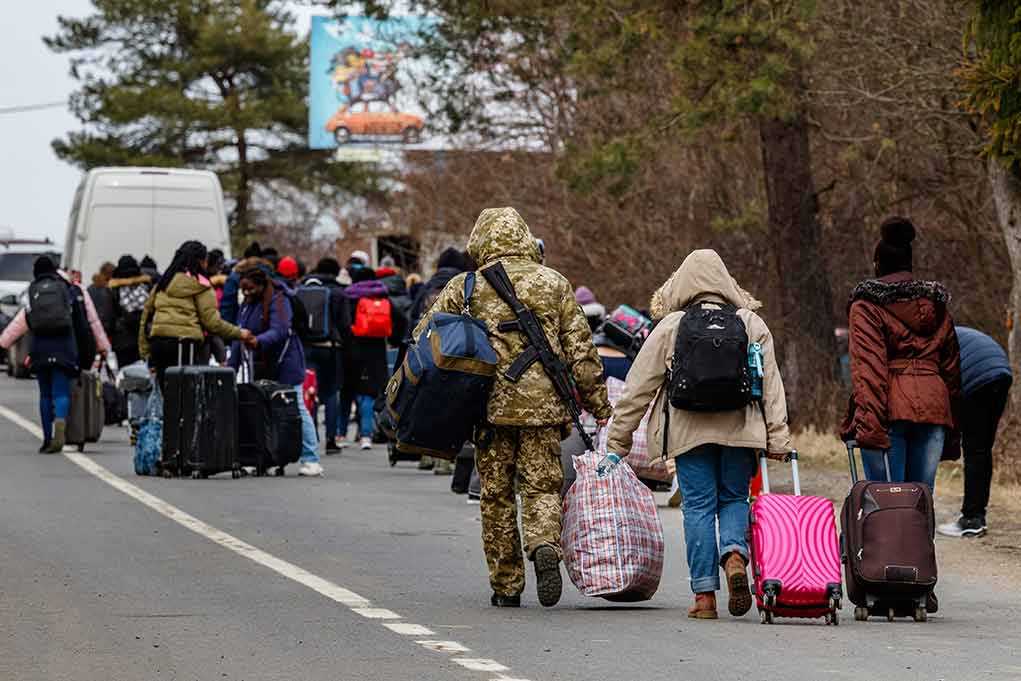
Nearly 20,000 Berlin residents faced forced overnight evacuation when unexploded World War II bombs were discovered during routine construction checks, exposing how Europe’s wartime legacy continues to threaten civilian safety eight decades later.
Story Highlights
- Over 10,000 residents evacuated overnight from Fischerinsel area after bomb found underwater in River Spree
- Second bomb discovery in Spandau district required evacuation of additional 12,000 people
- Emergency shelters overwhelmed as ship and subway traffic completely halted across central Berlin
- Bomb assessment revealed Fischerinsel device posed no immediate threat, allowing residents to return Friday morning
Emergency Response Mobilizes Across Central Berlin
Berlin police established a 500-meter exclusion zone around the Fischerinsel area Thursday evening after construction crews discovered unexploded ordnance four meters underwater in the River Spree. The densely populated central district required immediate evacuation of over 10,000 residents, who queued at hastily opened emergency shelters throughout the night. KTI specialists from the police criminalistics team worked through darkness to assess the device’s stability and threat level.
Authorities suspended ship navigation along the River Spree and halted subway services affecting multiple transit lines. Local media reported emergency shelters reached capacity, forcing officials to open additional facilities to accommodate displaced families. Berlin police maintained real-time communication through social media, providing evacuation instructions and safety updates to concerned residents and businesses.
Historical Legacy Creates Modern Safety Challenges
World War II bombing campaigns left thousands of unexploded devices buried throughout Berlin, making such discoveries routine during urban development projects. Construction companies must conduct mandatory ordnance checks before breaking ground, a costly but necessary precaution that frequently uncovers dangerous remnants. The Fischerinsel bomb’s underwater location complicated assessment procedures, requiring specialized equipment and extended evaluation time.
German cities experience multiple mass evacuations annually due to wartime ordnance discoveries, with some incidents displacing tens of thousands of residents temporarily. These events demonstrate how historical conflicts continue imposing economic costs and safety risks on modern communities. Urban planners acknowledge that Berlin’s development projects face ongoing challenges from unexploded bombs, affecting construction timelines and increasing project expenses significantly.
Separate Spandau Discovery Compounds Crisis
A second unexploded bomb discovered in Berlin’s Spandau district required evacuation of an additional 12,000 residents, bringing the total displacement to nearly 20,000 people. Unlike the Fischerinsel device, the Spandau bomb requires active defusing operations, extending the evacuation timeline indefinitely. Emergency services coordinated dual response operations across multiple districts, straining resources and personnel.
The simultaneous evacuations highlight Berlin’s vulnerability to wartime remnants and the logistical complexity of protecting civilian populations. Emergency management professionals praised the coordinated response but noted the psychological toll on displaced families and economic disruption to affected businesses. This incident represents one of Berlin’s largest recent evacuations, underscoring the persistent impact of World War II on European urban centers.
Sources:
Berlin Evacuates Over 10,000 Residents Overnight After Discovery of Unexploded WWII Bombs

















